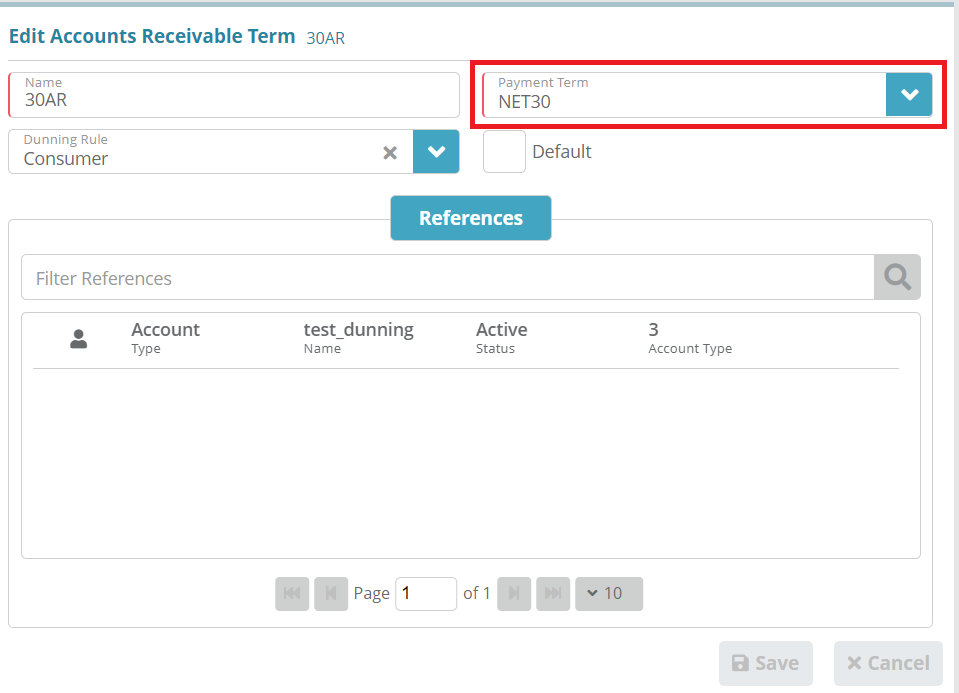Payment Terms Example
Summary
Payment terms allow you to define how invoice due dates are set and are required in order to setup accounts receivable terms (AR terms). AR terms are selected when creating accounts in order to specify the invoice due dates and dunning rules that apply to the account.
In this example we will add a payment term that is configured with a Net 30 configuration so that payment will be due 30 days after the invoice is rendered/the bill date of the account.
The Start date when configuring a ‘Net’ due date is determined by the bill group setting 'Invoice Due Date Based On'.
For additional details on the fields presented on the payment terms screen see the Payment Terms Screen screen help article.
Prerequisites
Payment terms can be setup as needed, there are no prerequisite configuration steps
Sample Configuration
Adding a Payment term
Log into the LogiSense Billing application
Click on the Setup menu, Finance and then Dunning Process
Click on the Payment Terms tab in the upper right
Under the Payment Terms heading click the
 button to add a Payment Term
button to add a Payment TermUnder the Add Payment Terms heading give the Payment Term a Name (e.g. 'NET30'). In the example shown below a payment term will be created to set the account payment due date as 30 days after the invoice render date/account bill day
Set the Payment Terms Type as Net
Enter the Term as 30
Click Save to add the Payment Term
Result
Payment Term: NET30 is available to be selected from the Payment Terms dropdown when creating/updating an AR Term.
Setup / Finance / Dunning Process / AR Terms
Next Steps
Optional: if you want to configure actions that occur when invoices are overdue (late payment charges, notifications emails, automatic account suspension) you can do so now or at a later time. See the Dunning Rules Configuration Example article for details on how to setup dunning rules
Accounts receivable terms are required in order to setup accounts in the system. See the Accounts Receivable Configuration Example article for details on how to configure AR Terms




